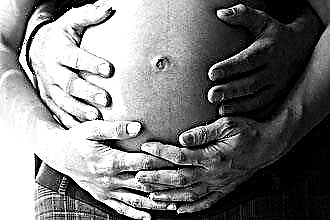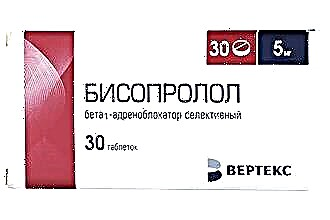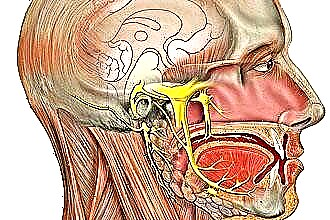Inflammatory diseases of the trachea in most cases are observed in the winter period of the year, when the risk of developing tracheitis increases. In addition, diverticula, trauma, tracheal stenosis, oncological neoplasms and tracheoesophageal fistulas are recorded. In children, tracheitis and foreign bodies of the trachea are more often diagnosed.
 Acute inflammation of the tracheal mucosa usually lasts no longer than two weeks, ending with recovery or chronicity of the pathological process. When the trachea is affected, the symptoms of the disease are:
Acute inflammation of the tracheal mucosa usually lasts no longer than two weeks, ending with recovery or chronicity of the pathological process. When the trachea is affected, the symptoms of the disease are:
- dry type cough with a gradual transition to wet with the release of viscous sputum. A coughing fit is triggered by deep breathing, cold air, screaming or laughing;
- retrosternal discomfort, pain that increases with coughing and persists for some time after an attack;
- purulent sputum, which appears against the background of bacterial infection;
- subfebrile hyperthermia with an increase in temperature towards the evening;
- malaise;
- insomnia;
- headache.
With the spread of an inflammatory reaction to the larynx, a person is worried about tickling, discomfort, tickling or soreness when swallowing. Lymphadenitis is also recorded.
For diagnosis, an objective study is used, in which auscultation of the lungs is performed. During the examination, dry rales are detected, localized in the bifurcation zone.
In a chronic course, the cough is observed constantly, especially at night or in the morning. Excretion of sputum occurs with a hypertrophic type of tracheitis. The cough in this case is caused by irritation of the mucous membrane with dry crusts. The symptoms of exacerbation are similar to the clinical signs of an acute process.
Allergic tracheitis, which is characterized by unpleasant sensations in the area of the sternum and oropharynx, should be singled out separately. The cough is persistent and accompanied by chest pain.
Vomiting is possible in young children with a severe cough.
Symptomatic allergic tracheitis is accompanied by:
- rhinorrhea, nasal congestion;
- itching (nose, eyes, skin);
- lacrimation, conjunctivitis, keratitis;
- rashes on the skin.
 With prolonged persistence of allergic tracheitis, the action of a provoking factor increases the risk of developing bronchial asthma with frequent attacks and bronchospasm. Of the complications of tracheitis, the following should be distinguished:
With prolonged persistence of allergic tracheitis, the action of a provoking factor increases the risk of developing bronchial asthma with frequent attacks and bronchospasm. Of the complications of tracheitis, the following should be distinguished:
- bronchitis;
- pneumonia, accompanied by hectic fever, severe cough, chest pain, severe symptoms of intoxication;
- tumors of the trachea.
From instrumental diagnostic methods, endoscopic examinations (laryngo, tracheoscopy) are prescribed,
Laboratory diagnostics are also required, which includes bacterial analysis with sputum culture. In case of prolonged cough, a study for CFB is indicated to exclude tuberculosis. Blood tests show leukocytosis and high ESR. With an increase in the level of eosinophils, it is recommended to consult an allergist and immunological studies.
Laryngotracheoscopy reveals redness, swelling of the mucous membrane and petechial hemorrhages, characteristic of influenza infection. With the hypertrophic type, a cyanotic shade of the mucous membrane, its thickening, is revealed, which makes it difficult to determine the tracheal rings.
In the case of the atrophic type, pallor, dryness, and thinning of the mucous membrane, on the surface of which the crusts are located, are noted. Additionally, rhinoscopy, radiography and tomography are used in diagnostics.
Treatment involves the use of several directions (medicines, inhalations, physiotherapy).
| Drug group | Action | Name of the medicine |
|---|---|---|
| Antibacterial drugs (for bacterial inflammation) | Cephalosporins, macrolides, penicillins. They have an antibacterial effect on certain pathogenic microorganisms. | Cefuroxime, Azitrox, Amoxicillin |
| Antivirals (when viral infection) | Immunomodulators, antiviral | Amiksin, Groprinosin, Remantadin, Arbidol |
| Antihistamines | Reduce the production of biologically active substances that activate the development of an allergic reaction | Erius, Loratadin, Suprastin |
| Expectorants | Facilitate the secretion of phlegm | Thermopsis, marshmallow root |
| Mucolytics | Reduce the viscosity of phlegm | ACC, Bromhexine |
| Antitussives | Suppress the cough reflex | Codeine, Sinecod, Bronholitin |
| Inhalation | Local antiseptic, anti-inflammatory action | Ambroxol, still mineral water |
From physiotherapeutic procedures, UHF, electrophoresis, massage sessions and reflexology courses are prescribed.
Tracheal stenosis
Narrowing of the tracheal lumen can be provoked by external compression or internal morphological abnormalities. Stenoses are congenital in nature or can develop during life. There are three degrees of constriction:
- reduction of the lumen by a third;
- decrease by two thirds;
- residual patency of the trachea is one third.
Given the severity of narrowing, clinically distinguish compensated, subcompensated and decompensated stages. Among the reasons for the formation of stenosis, it is worth highlighting:
- long intubation, mechanical ventilation;
- tracheostomy;
- surgical interventions on the trachea;
- burns, injuries;
- tumor of the trachea;
- compression from the outside by enlarged lymph nodes, cystic formations.
Symptomatically, the disease manifests itself:
- noisy exhalation;
- shortness of breath, which causes the person to tilt their head forward;
- shortness of breath;
- cyanosis.
Pronounced clinical signs are observed with a narrowing of more than half. With a congenital origin, symptoms develop immediately after birth. Children experience choking, coughing, blueness of the nose, ears, fingertips, and asthma attacks. Further, defective physical development is noted. The death of a child occurs from pneumonia or asphyxia.
 Clinical signs can be expressed as cough-fainting syndrome. It is characterized by the appearance of a dry barking cough when the position of the body changes. The attack is accompanied by dizziness, severe shortness of breath, loss of consciousness, and apnea. Fainting can last up to 5 minutes. After the end of the attack, thick sputum leaves and motor excitement is noted.
Clinical signs can be expressed as cough-fainting syndrome. It is characterized by the appearance of a dry barking cough when the position of the body changes. The attack is accompanied by dizziness, severe shortness of breath, loss of consciousness, and apnea. Fainting can last up to 5 minutes. After the end of the attack, thick sputum leaves and motor excitement is noted.
For diagnosis, the first thing to do is an X-ray, according to the results of which the patient is sent for tomography. To determine the length and severity of stenosis, tracheography is performed, during which, with the help of a contrast agent, it is possible to visualize the outline of the trachea. Aortography is recommended to diagnose vascular anomalies.
Endoscopic examination (tracheoscopy) makes a huge contribution to diagnostics, which makes it possible to examine morphological changes and clarify the origin of additional education. In order to determine the degree of obstruction, spirometry is prescribed.
Therapeutic tactics for organic stenosis involves surgical intervention using endoscopic instruments. In the case of cicatricial changes, injections of hormonal agents and triamcinolone are indicated, as well as laser vaporization, endoscopic techniques, bougienage and endoprosthetics of the narrowed area.
If compression is diagnosed, for example, with a tumor of the trachea, an operation is performed to remove the neoplasm. In case of functional disorders, the following are prescribed:
- antitussives (Codeine, Libeksin);
- mucolytics (Fluimucil);
- anti-inflammatory drugs (ibuprofen);
- antioxidants (vitamin E);
- immunomodulators.
It is also possible to carry out endoscopic procedures with the introduction of antibacterial and proteolytic drugs. From physiotherapeutic procedures, electrophoresis, massage and breathing massage are prescribed.
Tracheoesophageal fistula
 The formation of a junction between the esophagus and the respiratory tract leads to severe clinical symptoms. The origin of the pathology can be congenital or appear during life (after surgery, intubation, trauma, or due to a tumor of the trachea).
The formation of a junction between the esophagus and the respiratory tract leads to severe clinical symptoms. The origin of the pathology can be congenital or appear during life (after surgery, intubation, trauma, or due to a tumor of the trachea).
Complications include pneumonia, cachexia, bacterial infection of the lung tissue and sepsis with the formation of infectious foci in the internal organs (kidneys, maxillary sinuses, tonsils).
The symptomatology of the pathology depends on many factors. With the congenital nature of the disease, coughing, choking, flatulence and mucus from the nose when trying to swallow water are noted. Breathing becomes difficult, cyanosis is recorded, a violation of the cardiac rhythm and wheezing in the lungs is heard. In the near future, pneumonia and atelectasis develop.
It is difficult to diagnose with a narrow long fistula, when the child has occasional choking and coughing. With an acquired fistula, it worries:
- cough;
- cyanosis;
- suffocation.
Symptoms are observed with food intake. Pieces of food are found in the coughing up sputum. Hemoptysis, chest pains, vomiting with blood impurities, weight loss, shortness of breath and periodic hyperthermia are also possible.
In the diagnosis, probing of the esophagus is used, methylene blue is injected, radiography, esophagography and tomography are prescribed. For clear visualization of the trachea and esophagus, a contrast agent is injected, after which several x-rays are taken.
Treatment with conservative methods is used in the preparatory stage before surgery. Sanitation bronchoscopy, gastrostomy and nutritional support are also prescribed.
Foreign body
The entry of a foreign element into the lumen of the trachea occurs due to aspiration or trauma.
In 93% of cases, foreign elements are detected in children under five years of age.
Most often, foreign objects penetrate the bronchi (70%), the trachea (18%) and the larynx (12%). The danger of the condition is due to the high risk of asphyxia. Foreign elements enter the trachea through the larynx or wound canal connecting the external environment and the trachea.
Most of the cases involve the ingress of objects from the mouth due to choking on small elements (constructor, buttons) during deep breathing, physical exertion, coughing, laughing or playing.
The reverse passage of the element when coughing from the larynx is impossible due to reflex spasm of the vocal cords. Clinically, the pathology is manifested by an attack of suffocation, hacking cough, lacrimation, vomiting, increased salivation and cyanosis of the face. If a foreign body is fixed in the vocal cords, asphyxia develops.
After the end of the acute period, there is a certain lull. Cough worries only when you change the position of the body. The general condition improves, the person calms down, he is worried only about the chest discomfort and the secretion of mucus with blood. A popping sound is heard in the case of subjects running. At a distance, you can hear whistling or wheezing when breathing, which is associated with the passage of air through the narrowed area of the trachea.
 With fixed objects, the patient's anxiety, severe shortness of breath, acrocyanosis and retraction of the intercostal muscles are observed. If the object exerts pressure on the tracheal wall for a long time, the risk of necrosis of this area and tracheal stenosis increases.
With fixed objects, the patient's anxiety, severe shortness of breath, acrocyanosis and retraction of the intercostal muscles are observed. If the object exerts pressure on the tracheal wall for a long time, the risk of necrosis of this area and tracheal stenosis increases.
In the diagnosis, physical examination, endoscopic, and X-ray examination are used. On physical examination, sonorous, difficult breathing is determined, wheezing in the lungs and signs of stridor are auscultated.
With laryngoscopy, it is possible to visualize foreign objects or damage to the mucous membrane of the respiratory organs. With the localization of foreign elements in the bifurcation area, tracheobronchoscopy, bronchography and radiography are prescribed.
Treatment involves urgent removal of the foreign element. To select a technique, the location, shape, size, density and degree of displacement of the foreign body are taken into account.
The most commonly used endoscopic method (laryngoscopy, tracheobronchoscopy). Anesthesia is required for manipulation. Surgical intervention is indicated with a deep location of the element, its wedging and severe respiratory distress.
In this case, tracheostomy and lower bronchoscopy are performed. Open surgery is performed when the trachea is ruptured. In the postoperative period, antibiotic therapy is carried out for prophylactic purposes.
Tumors
Oncological diseases of the trachea, benign or malignant, lead to the appearance of the following clinical symptoms:
- labored, noisy breathing;
- cough;
- cyanosis;
- sputum in small volume.
Given the cellular composition of the neoplasm, the course of the disease can be assumed. With benign lesions, rapid growth and severe disease symptoms are usually not observed. In this case, it is possible to diagnose the pathology in a timely manner and begin treatment.
 If a malignant tumor is diagnosed, metastasis to nearby or distant internal organs is possible. The rapid growth of the neoplasm leads to a rapid deterioration in the condition.
If a malignant tumor is diagnosed, metastasis to nearby or distant internal organs is possible. The rapid growth of the neoplasm leads to a rapid deterioration in the condition.
With a large tumor size, sputum discharge is difficult, which provokes the appearance of wheezing and the development of secondary pneumonia. Sputum congestion increases the risk of inflammation due to bacterial complications.
When a tumor has a leg, the symptoms bother the person only in a certain position. The primary origin of the tumor is observed when the cellular structure in the tracheal mucosa changes. The secondary genesis of tumor development is due to the spread of neoplasms from the esophagus, bronchi or larynx, as well as metastasis from distant oncological foci.
In children, papillomas are often diagnosed, in adults - papillomas, adenomas, and also fibromas.
In the diagnosis, radiography with contrast is used, which makes it possible to visualize the protrusion and outlines of the tumor. Endoscopic examination is considered informative, thanks to which it is possible to take material for histological analysis. Based on the results of the biopsy, the type of tumor is established and the treatment tactics are determined. To identify the prevalence of cancer and metastases, computed or magnetic resonance imaging is prescribed.
The treatment uses surgery, radiation and chemotherapy. The operation is carried out with a limited process. If metastases are diagnosed, chemotherapy is prescribed. With the spread of the oncological process to the surrounding organs and inoperability of the tumor conglomerate, tracheostomy can be performed.
Diverticula
A cavity formation communicating with the lumen of the trachea is called a diverticulum (DT). Often, pathology is detected by chance during tomography. It occurs during intrauterine development or during life.
 With an increase in intratracheal pressure with prolonged cough, the risk of diverticulum formation increases. Especially often, pathology develops against the background of obstructive pulmonary diseases, cystic changes in the glands and weakness of the tracheal wall.
With an increase in intratracheal pressure with prolonged cough, the risk of diverticulum formation increases. Especially often, pathology develops against the background of obstructive pulmonary diseases, cystic changes in the glands and weakness of the tracheal wall.
There are several classifications. The tracheal diverticulum can be with one or more chambers, single or in groups. In the case of a small formation, there are no symptoms.Clinical signs are observed with increasing organ compression.
Symptom complex is presented:
- cough;
- shortness of breath;
- swallowing disorder;
- change in voice (hoarseness).
Hemoptysis is rarely observed. It is believed that diverticula are the source of chronic infection, which is manifested by frequent tracheobronchitis.
Of the complications, it is worth noting the suppuration of the diverticulum, which is accompanied by the release of a large amount of sputum of a yellow-green tint of a viscous consistency.
Diagnostics uses computed tomography, X-ray examination with contrast, fibrogastroduodenoscopy and tracheobronchoscopy with video control.
When the disease is asymptomatic, treatment is usually not carried out. If clinical manifestations begin to bother in old age, conservative tactics are chosen. It includes the appointment of anti-inflammatory, tonic and mucolytic agents. Physiotherapy treatments are also recommended.
Surgery is indicated when there are symptoms and complications associated with compression of the surrounding organs and infection. During the operation, the diverticulum is dissected with the elimination of its connection with the lumen of the trachea.
The defeat of the trachea is a serious pathology, regardless of its origin. In the case of infectious and inflammatory genesis, treatment at home is possible. However, with injuries or penetration of foreign elements into the lumen of the respiratory tract, a threat to human life is noted, therefore urgent medical attention is required.



